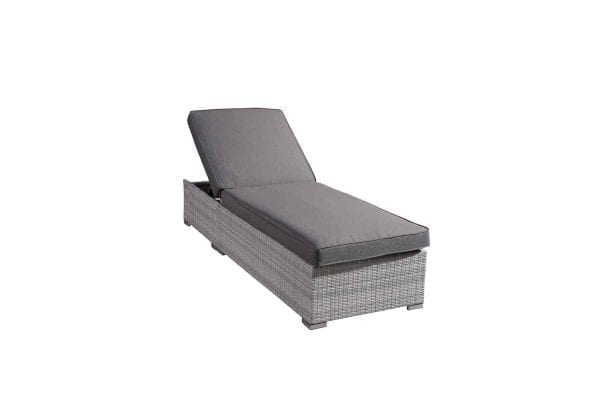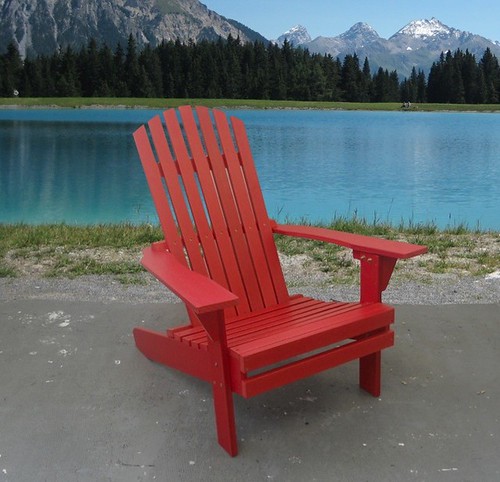 The Adirondack chair is one of the most iconic pieces of patio furniture. With wide slats that recline slightly and wide armrests, this chair represents summer, relaxation, and the outdoors. You’ll often see it on patios, lakeside retreats, and outdoor cafes. Even if you don’t know its official name, you’ve probably sat in one and enjoyed its gentle recline and comfortable armrests.
The Adirondack chair is one of the most iconic pieces of patio furniture. With wide slats that recline slightly and wide armrests, this chair represents summer, relaxation, and the outdoors. You’ll often see it on patios, lakeside retreats, and outdoor cafes. Even if you don’t know its official name, you’ve probably sat in one and enjoyed its gentle recline and comfortable armrests.
Iconic Roots
Thomas Lee first created the chair in the early 20th century in the Adirondack Mountains, after he had trouble finding furniture for his lakeside home. Lee wanted comfortable outdoor seating, but none of the chairs he found suited his taste. So he built several prototypes in an effort to create the most comfortable outdoor chair. He had his twenty-two family members test them, and they settled on the one with wide armrests and a slight recline. He named it the Adirondack chair, and his design has held the test of time. It continues to be a popular patio item, and many people love it for its comfort and practicality.
Adirondack Options
Adirondack chairs have evolved from Lee’s original design. The original chairs were made from hemlock or hickory. But now they come in a variety of natural woods, including cedar, cypress, and pine. They are also available in modern options like polywood, a recycled plastic lumber. These options have resulted in differing levels of durability, weather resistance, and maintenance.
Wooden Adirondack Chairs
Wooden chairs generally offer less durability, less weather resistance, and more maintenance than their poly wood counterparts. The type of wood determines the level of maintenance, and some people enjoy the labor of caring for their furniture. For instance, cedar is considered very durable, but it will splinter unless refinished annually. Pine, meanwhile, is susceptible to insect infestation and rotting. It, too, needs refinishing and resealing every year. Both are affordable options, starting at around $120 for a decent quality design, but maintenance is a major drawback.
Only teak offers limited maintenance options. Teak wood is not prone to insect infestation and rot, though it is vulnerable to sun damage. Durability comes at a cost, though: teak is scarcer than pine or cedar, so teak Adirondack chairs often start in the $700 price range. They are not for the price conscious buyers.
First introduced in 1990 by two high school friends, polywood is made from recycled plastics like milk jugs, which are processed to look and function as lumber. Made from polyethylene, these muskoka chairs will outperform wooden ones in both durability and weather resistance. You can leave them outdoors in virtually any kind of weather, and you don’t need to apply additional special treatment. All they’ll need is a simple washing with soap and water. No refinishing or resealing is necessary.
In addition to low maintenance, poly-wood offers the advantage of customization. Polywood Adirondack chairs come in many different colors, some of which look like traditional wood. They’re more expensive than wooden ones—they start at around $250 per chair—but they’re an eco-friendly option with advantages like low maintenance and long durability. So if you’re looking to invest in timeless patio furniture and don’t want the hassle of yearly upkeep, then poly wood muskoka chairs are the option for you.
Article by Angie Picardo – staff writer at NerdWallet, a personal finance site that helps consumers set financial goals and get the most from their money.


